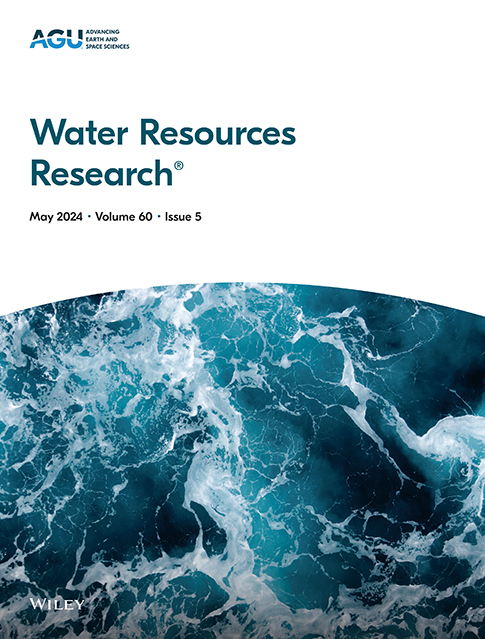Effects of Vegetation on Runoff Hydrodynamics and Erosion Morphologies in Headcut Erosion Processes in the Loess Tableland Region
IF 5
1区 地球科学
Q2 ENVIRONMENTAL SCIENCES
引用次数: 0
Abstract
Vegetation significantly affects the soil properties and runoff processes of gully head systems, thereby affecting their development. However, the mechanisms underlying the effects of vegetation on gully headcut erosion remain unclear. To explore these mechanisms, a series of simulation experiments were carried out on plots with four types of vegetation and bare land (BL). The results revealed that vegetation reduces the runoff velocity in the upstream area (Vup), gully head brink (Vbrink), and gully bed (Vbed) areas by 15%–70%, 3%–54%, and 1%–30%, respectively, and that vegetation type impacts Vup, with no obvious impacts on Vbrink, the jet flow velocity (Vjet) or Vbed. Vegetation reduced the jet flow shear stress (τjet) under low inflow discharge, but under high inflow discharge, it increased τjet. Different vegetation types exhibited different effects on the increase in the Darcy–Weisbach friction factor (f) and Manning roughness coefficient (n) in the upstream area, whereas the effect of vegetation on the f and n value of the gully bed was not obvious. Vegetation reduced the gully head retreat length. Compared with BL, vegetation reduced the rate of soil loss by 31%–95%. Vegetation significantly and directly affects soil characteristics, hydrodynamic parameters, and gully head morphology. The gully head morphology significantly and directly influences the soil loss rate, which ultimately affected the length of gully head retreat. These findings contribute to a deeper understanding of the role of vegetation in gully headcut erosion, offering a scientific foundation for the implementation of preventive measures against such erosion.黄土塬区顶蚀过程中植被对径流水动力和侵蚀形态的影响
植被显著影响沟头系统的土壤性质和径流过程,从而影响沟头系统的发育。然而,植被对沟壑侵蚀的影响机制尚不清楚。为了探索这些机制,在4种植被类型和裸地(BL)样地进行了一系列模拟实验。结果表明:植被对上游区(Vup)、沟头边缘区(Vbrink)和沟底区(Vbed)的径流速度分别降低了15% ~ 70%、3% ~ 54%和1% ~ 30%,植被类型对径流速度有影响,对Vbrink、射流速度(Vjet)和Vbed的影响不明显。植被在低流量条件下降低了射流剪切应力τjet,在高流量条件下增加了τjet。不同植被类型对上游地区Darcy-Weisbach摩擦系数(f)和Manning粗糙度系数(n)的增加有不同的影响,而植被对沟床f和n值的影响不明显。植被减少了沟头后退长度。与BL相比,植被使土壤流失率降低了31% ~ 95%。植被对土壤特征、水动力参数和沟头形态有显著而直接的影响。沟头形态直接显著影响土壤流失率,最终影响沟头退缩长度。这些发现有助于深入认识植被在沟壑侵蚀中的作用,为实施沟壑侵蚀的防治措施提供科学依据。
本文章由计算机程序翻译,如有差异,请以英文原文为准。
求助全文
约1分钟内获得全文
求助全文
来源期刊

Water Resources Research
环境科学-湖沼学
CiteScore
8.80
自引率
13.00%
发文量
599
审稿时长
3.5 months
期刊介绍:
Water Resources Research (WRR) is an interdisciplinary journal that focuses on hydrology and water resources. It publishes original research in the natural and social sciences of water. It emphasizes the role of water in the Earth system, including physical, chemical, biological, and ecological processes in water resources research and management, including social, policy, and public health implications. It encompasses observational, experimental, theoretical, analytical, numerical, and data-driven approaches that advance the science of water and its management. Submissions are evaluated for their novelty, accuracy, significance, and broader implications of the findings.
 求助内容:
求助内容: 应助结果提醒方式:
应助结果提醒方式:


